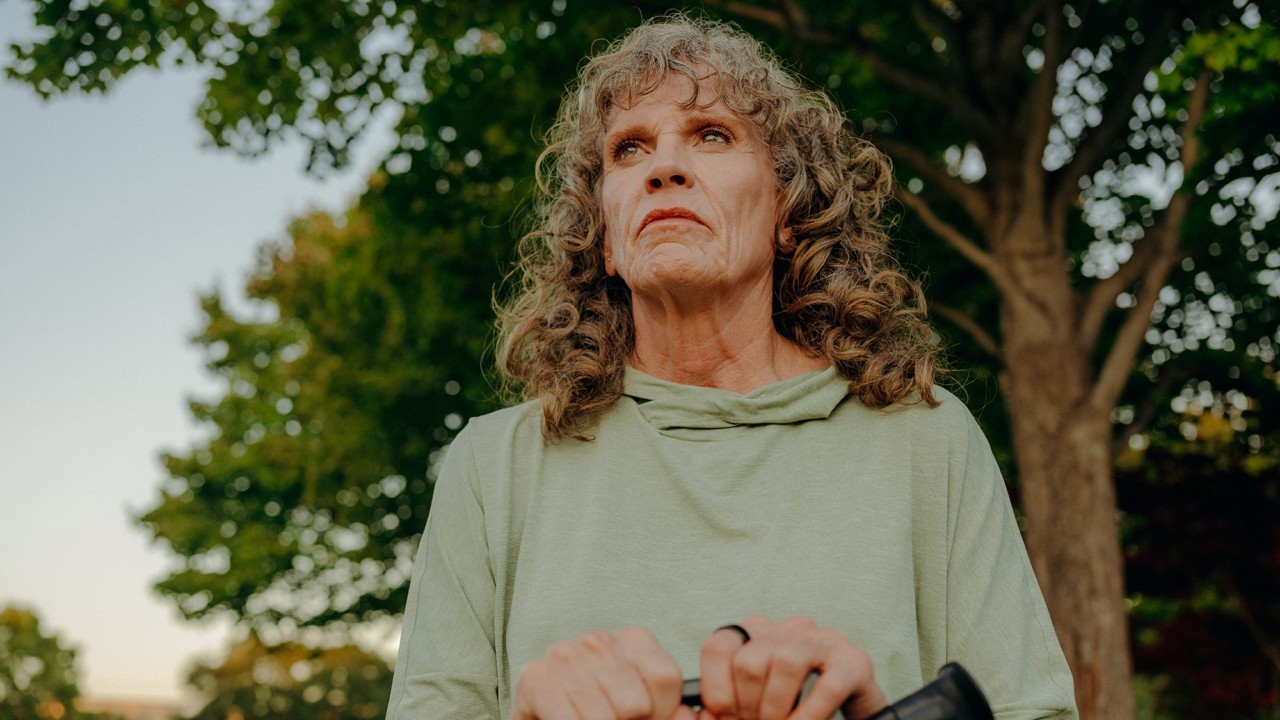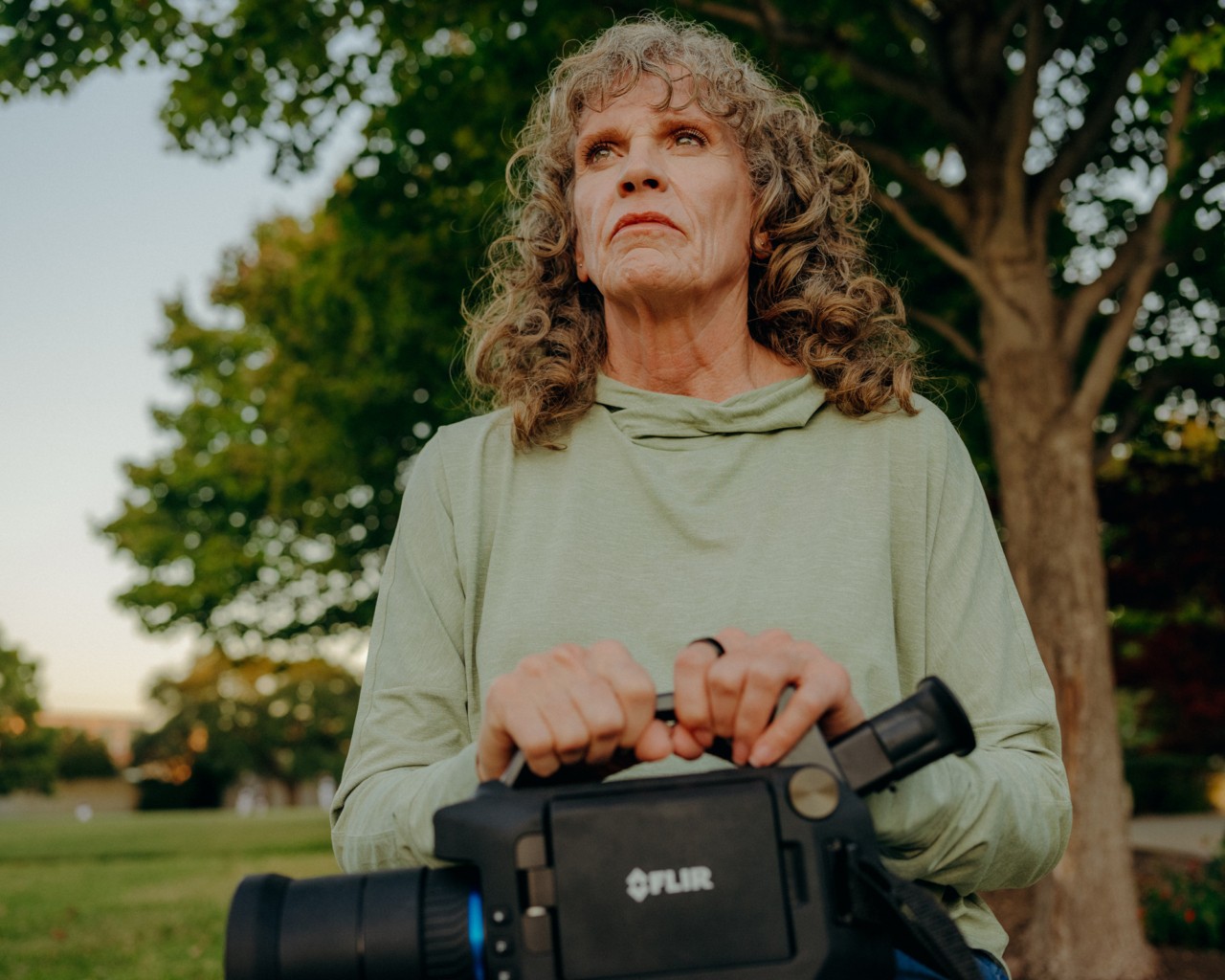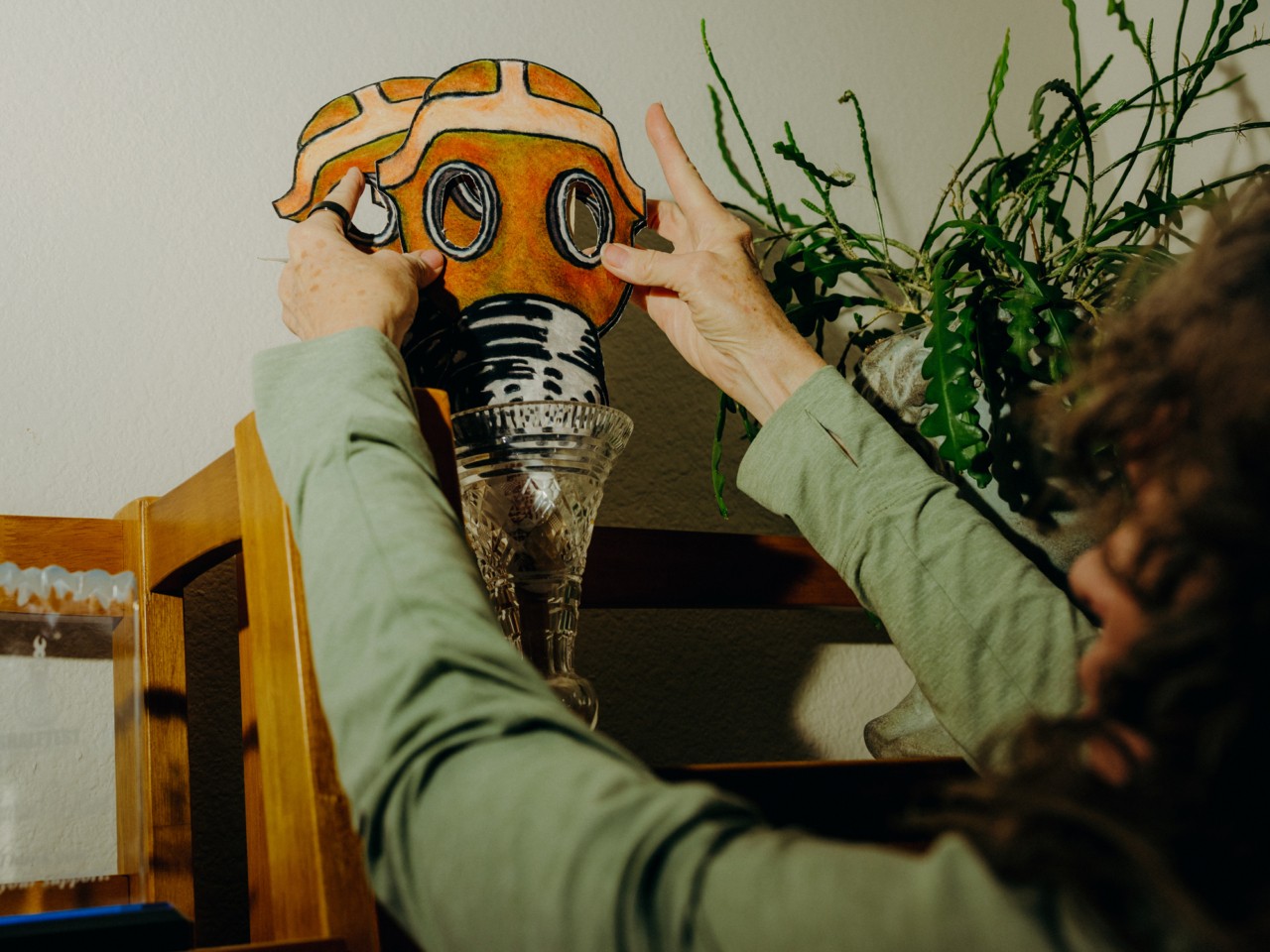

Words by Oliver Milman
photographs by sarah karlan
Sharon Wilson spent more than a decade in the oil business, never expecting to become one of its fiercest critics. But something in her snapped after she moved to rural Texas and saw her water and air fouled by a surge of fracking that quickly consumed her community.
Over the next 28 years, Wilson became one of the nation’s most relentless campaigners against the oil and gas industry—an industry that continues to enjoy near-unchecked sway in Texas, despite having extracted more planet-heating fuels across the country than any other nation in recent history. “It is a losing battle,” Wilson said. “But people are enraged. I’m not the radical here; they are. They called me all sorts of horrible names, threatened me—death threats, all kinds of things.”
Wilson’s work as a self-described “methane hunter” takes her across the vast, flat expanses of Texas, where at times the only structures breaking the horizon are tangles of oil and gas pipes and wellheads. Her workload is prodigious. Wilson has tracked methane gushing from tens of thousands of wells across the state and captured what she calls “horrific” emissions from gas turbines that power an Elon Musk-owned data center in Memphis, Tennessee.
Her persistence earned Wilson recognition well beyond Texas—she’s now worked with environmental groups including Earthworks and, more recently, Oilfield Witness—but she’s often seen as a lone operator, a one-woman chronicler of the secret smog that is cooking our planet. What began as a local crusade now has international implications: Wilson has briefed regulators and journalists in the United Kingdom, Japan, and across Europe.

In the past decade, Wilson has taken up a new weapon in her fight: an imaging camera that visualizes the emissions billowing from the myriad oil and gas wells that puncture central and western Texas. Methane, a potent greenhouse gas, cannot be seen by the naked eye—but through the lens of Wilson’s camera, it shows up in startling oranges and reds.
Filming from public roads, her infrared lens reveals what she calls “egregious emissions” from facilities that often have few, if any, workers onsite to prevent major leaks. “And they can do that because it’s invisible,” she said. “The industry can tell you anything, and there’s no way you can verify it by looking at the site unless you have a camera like I do.”
Her footage has shamed industry giants and won her new prominence. She appears in two new documentaries: This is Not a Drill, now showing at film festivals, and Gaslit, featuring Jane Fonda. If the American public could actually see the amount of methane spewing from oil and gas facilities, then “there never would [have been] a fracking boom [to begin with],” Wilson says in This is Not a Drill, which follows her as she aims her specialized camera at leaking wells and compressor stations.
“Sharon is a badass,” said Josh Eisenberg, who collaborated with Wilson at Earthworks. “Across the industry, methane emissions have been underestimated for a long time. There aren’t many of us doing this work, we are spread pretty thin, but the cameras have been pivotal to allow us to see how many pollution events are really happening.”
Methane hunting is a far cry from the quiet life Wilson imagined after leaving her data job in the fossil fuel industry and moving to a 42-acre plot in Wise County, northwest of Dallas. Back then, the sounds she cherished were the yips of coyotes and the laughter of her son, Adam, as they lay under the Texas sky tracing constellations onto paper.
That contentment was shattered by the advance of technology that turned the United States into the world’s oil and gas superpower: fracking. The method, which involves horizontal drilling deep underground to dislodge oil and gas from tightly-packed rock formations—first took hold in the 1990s near Wilson’s home atop the Permian Basin, a vast, mineral-rich formation stretching across western Texas and New Mexico that has since become the epicenter of America’s fracking boom.
It was in the early 2000s when Wilson began to notice towers of light so bright they washed out the stars. Adam, only 10 years old, wrote “they murdered the stars” in an essay for school. Disturbed, Wilson began snapping photos of drilling sites multiplying around her. She posted the images on a blog, which caught the attention of neighbors who shared with Wilson complaints of skin lesions, headaches, and tremors they blamed on nearby wells. One man even filmed a jet of flame erupting from his garden hose, claiming methane had seeped into his water supply.
Wilson had complaints of her own, too. “My air turned brown, and eventually so did my water,” she said. “At first, it just disappeared. I didn’t have any water. The house was shaking because there was air in the pipes. I suspect it was methane. It would come out of the faucet like a sharp burst of air, but no water, and then this big blob of black stuff plopped in my sink. After days, it [the water] started running gray and sandy.”

Wilson couldn’t prove fracking was the cause, but the experience perturbed her enough to move nearly an hour away to Denton, Texas, where she threw herself into activism. In 2014, she helped rally residents to vote for the state’s first ban on fracking within city limits—a victory swiftly overturned by the Texas Legislature the following year.
It was around that time that Wilson persuaded Earthworks to buy her the optical gas-imaging camera that came to define her campaign. She also took an industry course to learn how to use the camera. “The instructor kept quiet about who I was because they probably would’ve killed me,” she said, realizing then that the camera could become her most powerful tool. “People have a very strong reaction to those images. They’re just immediately either very angry or shocked.”
The backlash to Wilson’s work has been fierce. She says she’s been run off the road, threatened with violence, and warned her family would be taken out “Chicago style.” One commenter on Wilson’s blog told her to “remove this video before I remove your jaw.” Others, she said, have doxxed her online, posting her home address among many personal details.
Wilson suspects the industry’s hand in some of the harassment. She points to two lawsuits she believes were Strategic Lawsuit Against Public Participation—or SLAPP—suits meant to silence her. The Texas Oil and Gas Association, the state’s main industry group, did not respond to a request for comment on these or other allegations related to fracking.
Wilson presses on, alhough she stopped sending her videos and other evidence to the state regulator. She argues the agency is too supine to the interests of oil and gas companies to act. “The Texas Council for Environmental Quality views its responsibilities to ensure compliance as a priority and thoroughly and diligently investigates allegations of noncompliance, including citizen complaints,” a spokesman for TCEQ, the state regulator, told Atmos.
When it comes to methane, however, there is little for regulators to enforce. The Biden administration sought to strengthen oversight, but many of those efforts were rolled back under President Donald Trump. Earlier this year, a proposed fee on methane emissions was scrapped, and companies were granted extensions on several rules aimed at reducing leaks—which the Environmental Protection Agency called “an important step in unleashing the nation’s domestic energy supply.”
Despite being a lesser-known cousin of carbon dioxide, methane packs far greater heat-trapping power. It is responsible for around one-third of all global heating since pre-industrial times; alarmingly, its atmospheric levels have been rising at an accelerating rate since around 2006, driven by fracking, faster decomposition in wetlands, and the expansion of livestock farming, particularly cattle.
Around a quarter of methane emissions in the U.S. come from the oil and gas sector. Rather than capture and sell the emissions to make natural gas, many producers in places like the Permian Basin choose to vent the gas and release it in a bid to keep costs low and the methane invisible—that is, until Wilson’s camera makes it seen. Some methane escapes through leaky pipes. The flares that burn atop wells, a process known as flaring, convert methane into carbon dioxide, preventing the more potent gas from escaping directly into the atmosphere. But while flaring destroys methane, it still releases carbon dioxide, adding to overall greenhouse pollution.

The industry insists it has made progress in reducing methane leaks. But environmental groups claim the emissions are far higher than official figures suggest. The Permian Basin alone releases around 1.4 million metric tons of methane each year, all of which is essentially wasted, drifting into the shared atmosphere and deepening the climate crisis. “This really should be the low-hanging fruit of the climate problem,” said Amy Townsend-Small, a researcher and professor in the School of Environment and Sustainability at the University of Cincinnati. “Instead, the emissions rates are getting faster and faster, which is a scary thing for our climate. There are a lot of methane sources from human activities, but [methane leaks from oil and gas wells] are so obvious and clear to cut back on.”
Wilson sees little chance of reform under the Trump administration, so she has turned her focus abroad, speaking with lawmakers and activists from Mexico and the European Union to Japan about methane’s dangers. After all, some world leaders are already pushing for a binding global pact to slash methane, much as the Montreal Protocol once phased out CFCs and saved the ozone layer. “We need binding objectives on methane,” French President Emmanuel Macron said at a climate summit in New York in September. “We know that this is a reachable goal. This is the best way to reduce our emissions.”
That kind of talk gives Wilson a measure of hope. “For a long time, I didn’t think that it was moving the needle,” she said. “And I don’t know if it’s moving it enough, but I do feel like what we’re doing now, what Oilfield Witness is doing, is making a difference.” Still, for Wilson, the ultimate goal isn’t tighter methane rules—it’s an end to the age of combustion itself. “We have to stop burning things,” she added. “We just don’t need to burn things for energy anymore.”

This Former Oil Worker Is Now Exposing Dirty Methane Emissions



